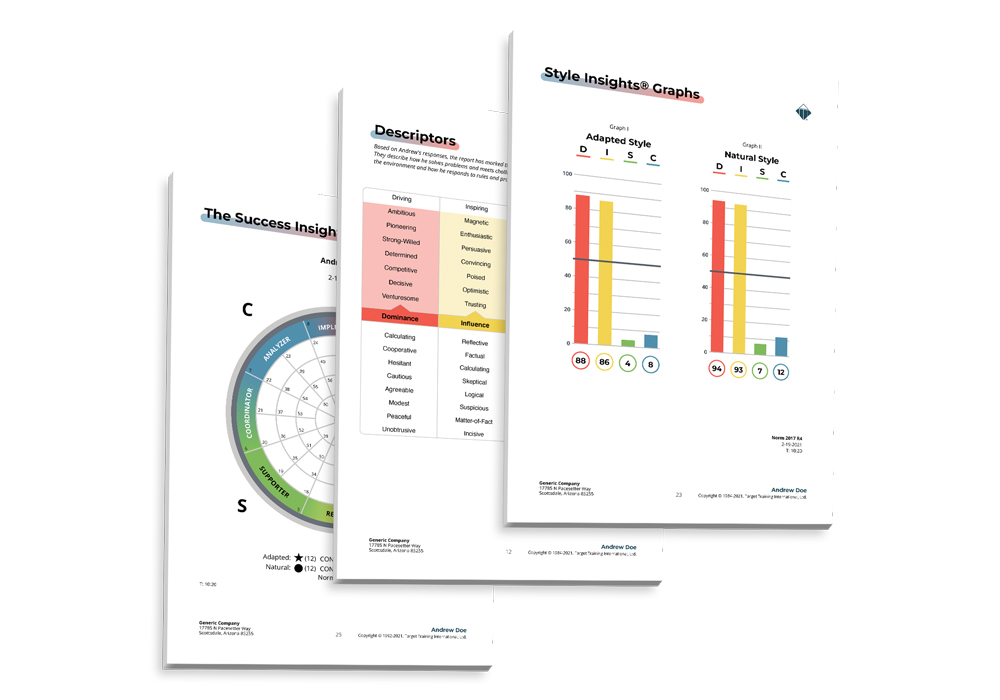
If you want to increase engagement in your workplace, improving communication at every level of your organization is a great place to start.
However, that can be easier said than done for your team — communication is a huge area to focus on. How can your team find out where they are at in terms of communication strength, and then where they need to improve.
That’s where communication style assessments come in. Using tools that dive deep into behavioral styles not only help people understand each other, but also creates a shared language in an organization.
Here’s how to improve communication in the workplace through assessments.
Communication Styles in the Workplace

Communication styles can be viewed through different lenses. Let’s look at two assessments that can be used to improve communication.
The first assessment is the EQ Assessment, which measures emotional intelligence. Emotional intelligence is a huge factor in improving communication because it helps you understand the feelings of others.
If you adopt the concept of EQ into your organization, you can decrease conflict and help individuals become more aware of themselves and others. By introducing understanding about emotional hijacking and self and social awareness, you can help your people grow.
The other assessment that really helps with communication is DISC, since it reveals primary behavioral styles and what those actually mean in your day-to-day.
What Are the Types of Communication Styles?
If you’re looking for more information about your communication style, start by looking at your behavioral style as outlined in the Engagement Report, which can be used as an excellent communication style assessment for teams.
Direct Communicators
Direct communicators (known as High Ds) are ambitious, forceful, decisive, strong-willed, independent and goal-oriented when dealing with problems and challenges.
Direct communicators are straightforward and to the point. They want to find the most unambiguous path forward, which can lead to bluntness and hurt feelings with less direct communicators.
Reflective Communicators
Reflective communicators (known as Low Ds) are cooperative, low-key, modest and mild when dealing with problems and challenges.
Reflective communicators prefer to take a back seat, especially when it comes to conflict situations. They work hard to avoid conflict which can lead to miscommunication and more conflict in the long run due to lack of clarity.
Outgoing Communicators
Outgoing communicators (known as High Is) are magnetic, enthusiastic, friendly, demonstrative and conversational when it comes to people and contacts.
Outgoing communicators thrive on connecting with others! They need lots of interaction and conversation to succeed in the workplace. They can be easily distracted, however, and might focus on talking over doing.
Reserved Communicators
Reserved communicators (known as Low Is) are restrained, controlled, non-animated and reflective when it comes to people and contacts.
Reserved communicators prefer to measure their words and make communication count. They are not fans of small talk or blustering, and they prefer to observe before speaking. They can get lost in the background with these communication preferences.
Steady Communicators
Steady communicators (known as High Ss) are patient, reliable, predictable and relaxed when it comes to pace and consistency.
Steady communicators are great team players. They enjoy thinking through their responses and interact thoughtfully in the workplace. Their responses might get lost if a project or conversation is moving quickly, and they likely won’t interrupt the flow to ask for what they need.
Dynamic Communicators
Dynamic communicators (known as Low Ss) are active, flexible, eager and fast-moving when it comes to pace and consistency.
They love to float new ideas, brainstorm, and dream of ‘what ifs’. However, this free spirited approach can cause problems for their more structured teammates. This communication style can appear disorganized or too direct for others.
Precise Communicator
Precise communicators (known as High Cs) are dependent, neat, careful, and compliant when it comes to procedures and compliance.
Precise communicators are focused on getting things done the right way, and communication is no exception to that rule. Speaking of rules, they thrive establishing procedure and sticking to it. They can have a hard time keeping an open mind while communicating, and won’t be happy if you can’t back up your opinion with facts.
Pioneering Communicators
Pioneering communicators (known as Low Cs) are uninhibited, open-minded, independent, unconventional, and intuitive when it comes to procedures and compliance.
Pioneering communicators are ready to blaze and trail and shake things up. Their visionary thinking can make for great paths forward, but can also cause problems in communication if their ideas are undeveloped or communicated poorly.
What Is a Communication Style Assessment?
Now that you’ve looked at a few styles of communication through the lens of DISC, you might be wondering what DISC does to improve communication besides just identifying those behavioral styles.
 The great thing about using a communication style assessment like DISC is that it gives your organization a shared language. The vocabulary of assessments helps ground your team in mutual understanding; behavior that might be confusing or distracting can be understood and explored with the right processes in place.
The great thing about using a communication style assessment like DISC is that it gives your organization a shared language. The vocabulary of assessments helps ground your team in mutual understanding; behavior that might be confusing or distracting can be understood and explored with the right processes in place.
How Can You Start to Change and Improve Communication Patterns?
It’s clear to see that improving communication is an important process for your organization. The first step to changing and improving communication patterns is to become aware of them in the first place. Communication style assessments are key in the process of building awareness and improving connection.
Are you interested in working with TTI SI? Our tools can help transform your organization. Get the information you need to move forward here.




![Don’t Let Your Behavioral Style Haunt You [Infographic]](https://blog.ttisi.com/hubfs/Halloween-Infographic_DontLetYourBehavioralStyleHauntYou_Email_Header.png)